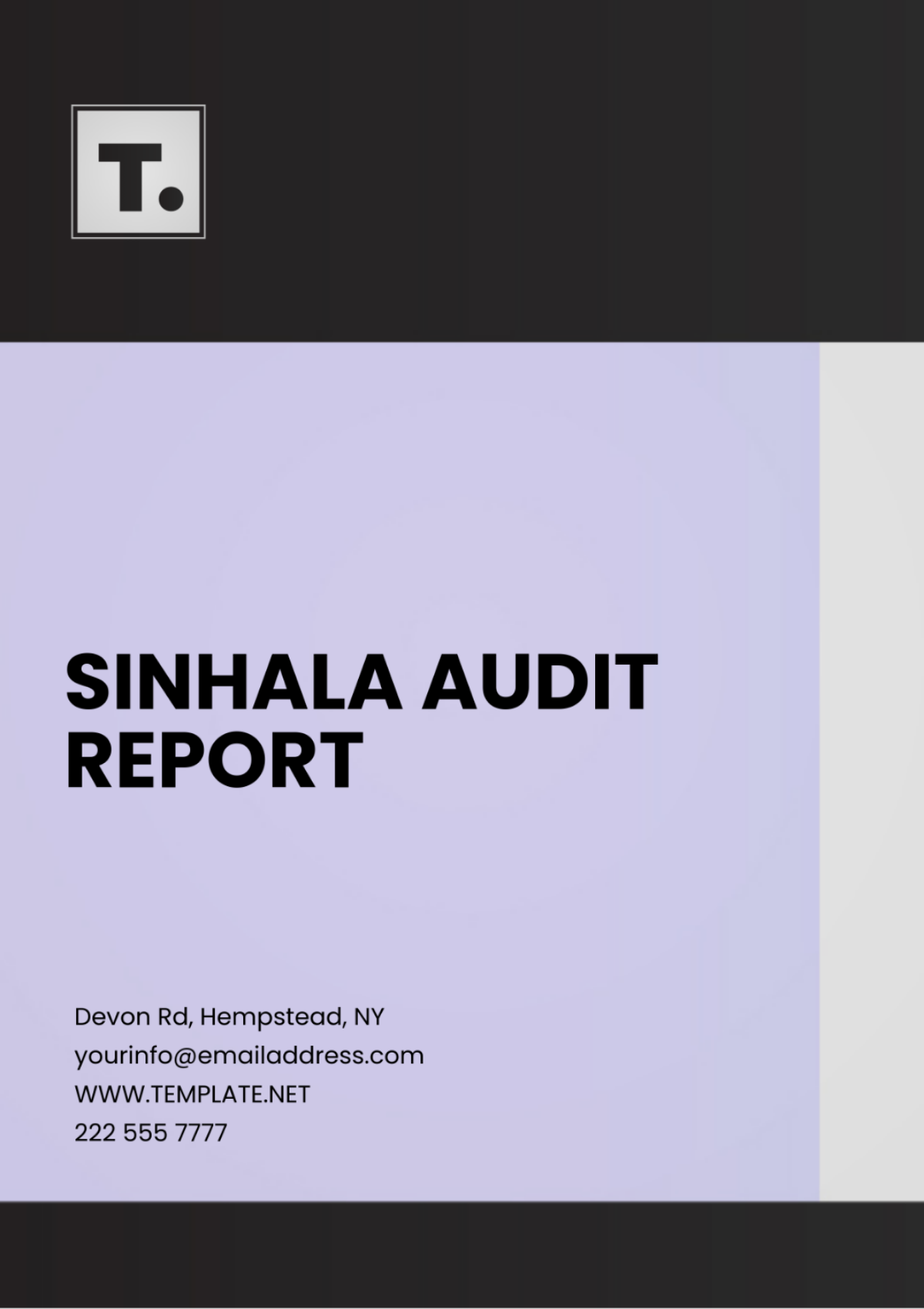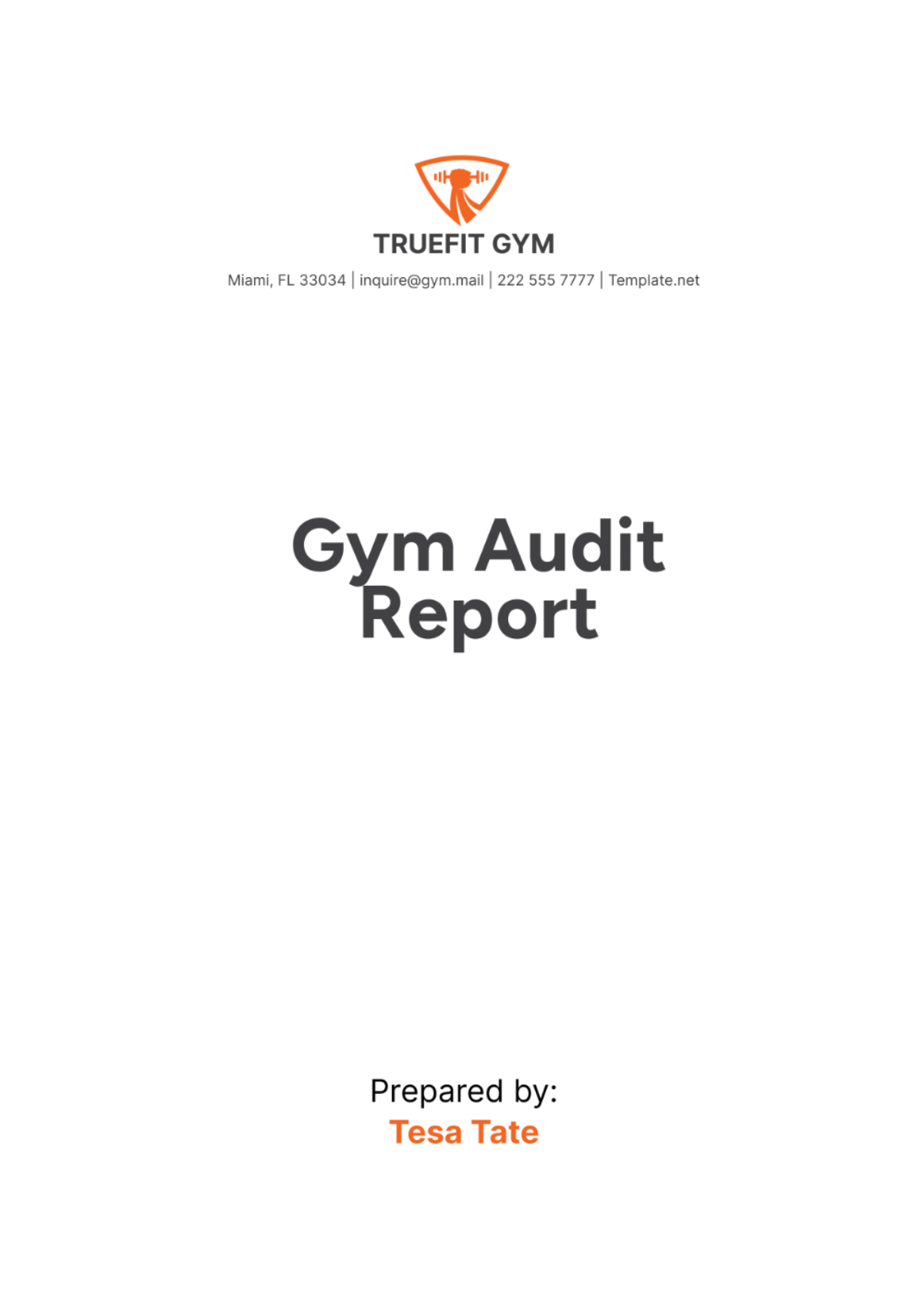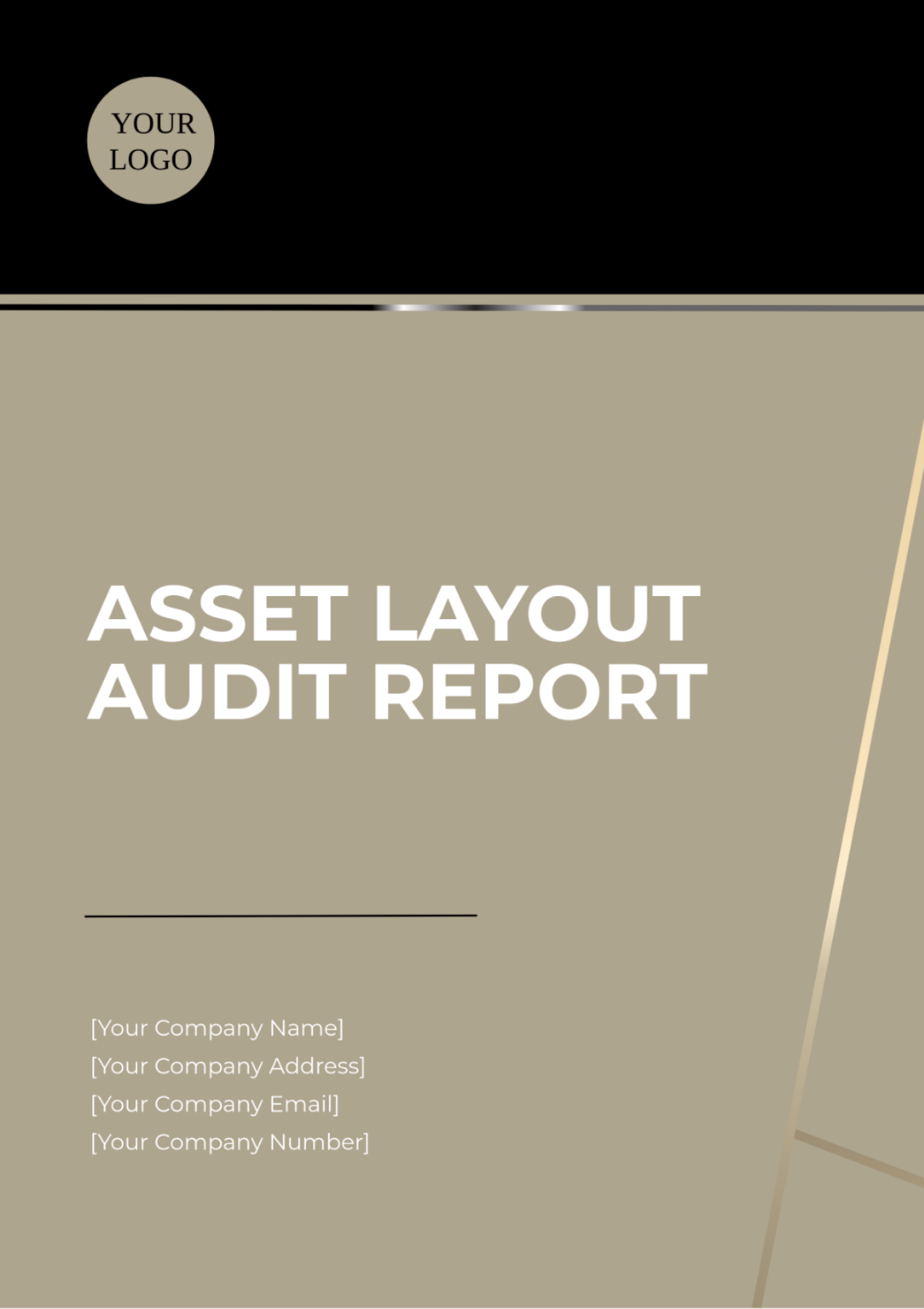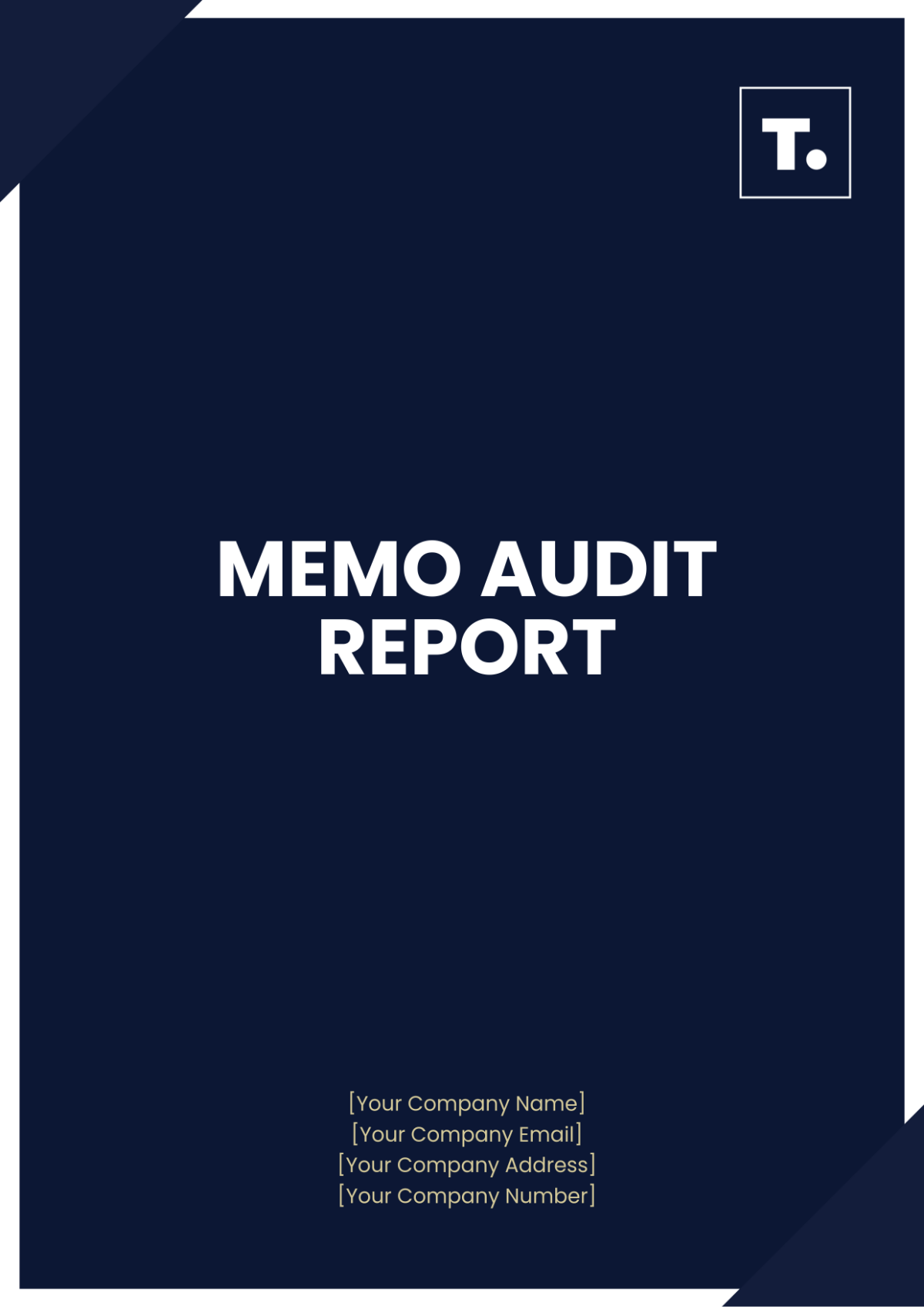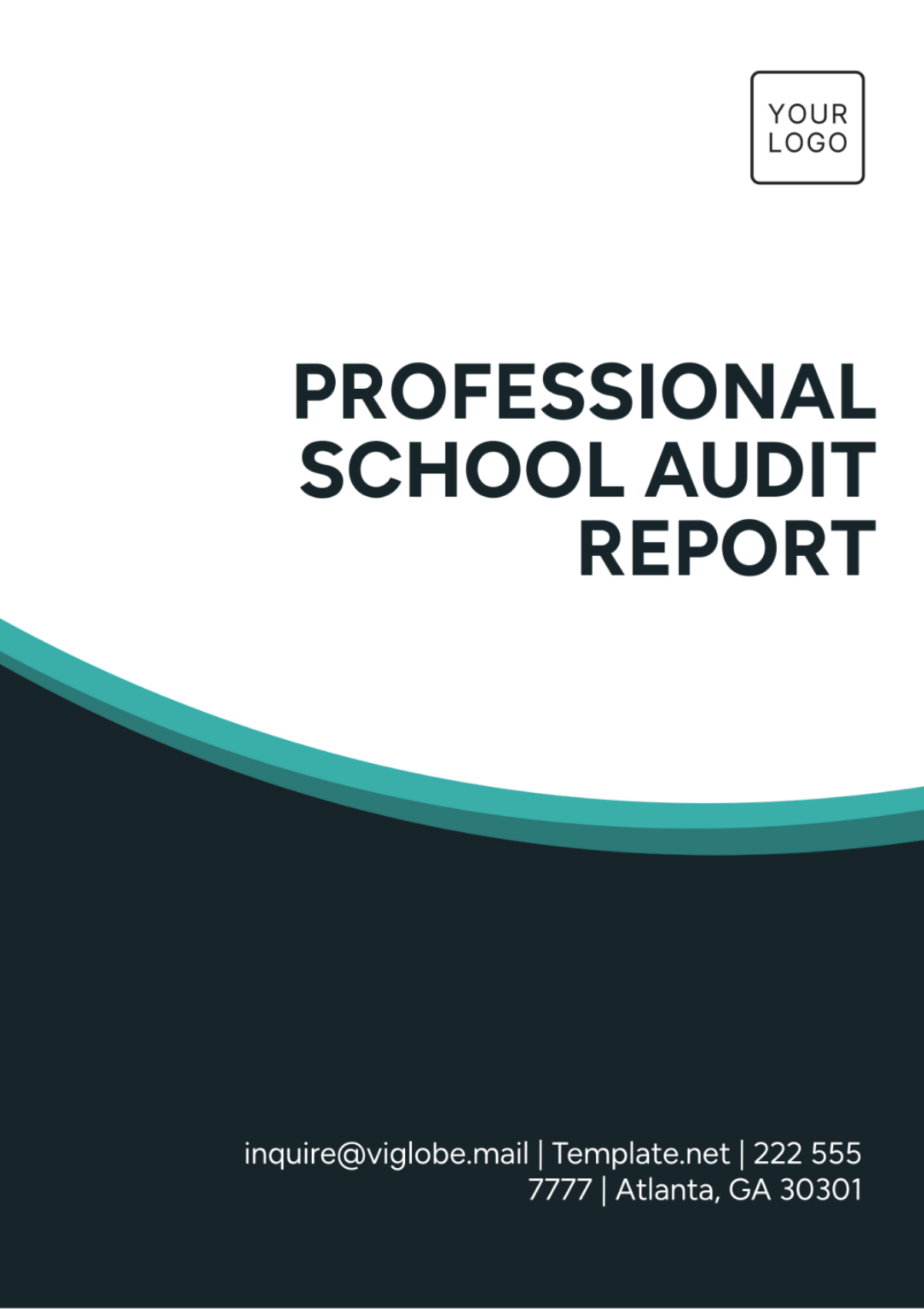Spa Audit Report
I. Introduction
A. Objectives
Financial Performance Evaluation: The primary objective of this audit report is to evaluate the financial performance of [Your Company Name]. This includes analyzing revenue, expenses, profitability, and cash flow to provide a comprehensive understanding of the spa's financial health.
Compliance Assessment: Assessing the spa's compliance with financial regulations and internal policies. Ensuring adherence to these standards is crucial for maintaining financial integrity and avoiding legal issues.
Operational Efficiency Review: Reviewing operational processes to identify areas where financial efficiency can be improved. This involves examining resource allocation, cost management, and revenue optimization strategies.
B. Scope
Time Frame: The audit covers financial data from the past fiscal year, January 2051 to December 2051. This period provides a complete picture of the spa's financial activities and performance.
Financial Data Sources: The analysis utilizes financial statements, transaction records, and relevant documentation to ensure accuracy and comprehensiveness. These sources provide the necessary data for a thorough audit.
Areas of Focus: Key areas of focus include revenue streams, expense categories, profitability analysis, and cash flow management. Each area is scrutinized to identify strengths and potential improvements.
C. Importance of This Report
Strategic Decision-Making: The insights gained from this audit will inform strategic decision-making processes. Understanding financial performance enables management to develop effective strategies for growth and sustainability.
Financial Health Monitoring: Regular financial audits are essential for monitoring the spa's financial health. Identifying issues early allows for timely interventions and corrective actions.
Stakeholder Confidence: A comprehensive audit report enhances stakeholder confidence by demonstrating transparency and accountability in financial management. This is crucial for building trust and maintaining positive relationships with investors and partners.
II. Revenue Analysis
A. Revenue Breakdown
The following chart and table present the revenue breakdown by service category for the past year:
Service Category | Total Revenue |
|---|---|
Massages | $450,000 |
Facials | $300,000 |
Body Treatments | $200,000 |
Wellness Packages | $150,000 |
Other Services | $100,000 |
Total | $1,200,000 |
Massages: Massages generated the highest revenue at $450,000, accounting for 37.5% of the total revenue. This indicates a strong demand for massage services, emphasizing the need to maintain high service standards and explore premium offerings to capitalize on this demand.
Facials: Facials contributed $300,000, making up 25% of the total revenue. This significant portion highlights the popularity of facial treatments and suggests potential for further growth through targeted marketing and the introduction of advanced skincare solutions.
Body Treatments: Body treatments generated $200,000, representing 16.7% of the total revenue. The steady revenue from this category indicates a consistent customer base. Expanding the range of treatments and promoting seasonal specials can drive additional revenue.
Wellness Packages: Wellness packages brought in $150,000, accounting for 12.5% of total revenue. This growing segment reflects increasing interest in holistic wellness experiences. Developing comprehensive and customizable packages can enhance guest satisfaction and boost sales.
Other Services: Other services, including specialty treatments, contributed $100,000 to the total revenue, making up 8.3%. Raising awareness and promoting the unique benefits of these services can attract more customers and improve revenue.
B. Revenue Insights
Revenue Concentration: The high concentration of revenue from massages and facials suggests a focused strategy on these popular services. Diversifying the service offerings and enhancing the marketing efforts for less popular services can balance the revenue streams.
Seasonal Trends: Analyzing seasonal trends in service utilization can inform marketing and promotional strategies. Offering seasonal discounts and packages can attract more customers during off-peak periods, boosting overall revenue.
Customer Segmentation: Understanding the demographics and preferences of customers can help in tailoring services and marketing efforts. Segmenting customers based on age, gender, and preferences can lead to more targeted and effective promotions.
Upselling Opportunities: Training staff to effectively upsell complementary services during guest visits can increase average revenue per customer. Offering bundled services and special deals can encourage guests to try additional treatments.
III. Expense Analysis
A. Expense Breakdown
The following table provides an overview of the spa's major expense categories for the past year:
Expense Category | Total Expenses |
|---|---|
Staff Salaries | $400,000 |
Supplies and Materials | $150,000 |
Marketing and Advertising | $100,000 |
Facility Maintenance | $80,000 |
Utilities | $50,000 |
Miscellaneous | $20,000 |
Total | $800,000 |
Staff Salaries: Staff salaries are the largest expense category, totaling $400,000, which is 50% of the total expenses. This significant portion underscores the importance of efficient workforce management. Investing in staff training and performance incentives can improve service quality and productivity.
Supplies and Materials: Expenses for supplies and materials amount to $150,000, accounting for 18.75% of total expenses. Effective inventory management and negotiating better supplier contracts can help reduce these costs without compromising service quality.
Marketing and Advertising: Marketing and advertising expenses total $100,000, representing 12.5% of the total expenses. Evaluating the return on investment (ROI) of marketing campaigns can ensure that funds are allocated to the most effective channels.
Facility Maintenance: Facility maintenance costs are $80,000, which is 10% of total expenses. Regular maintenance is essential for ensuring a pleasant guest experience and preventing costly repairs. Implementing a preventative maintenance schedule can optimize these expenses.
Utilities: Utilities expenses total $50,000, making up 6.25% of total expenses. Monitoring and optimizing energy usage through efficient systems can help reduce these costs.
Miscellaneous: Miscellaneous expenses amount to $20,000, representing 2.5% of total expenses. Regularly reviewing these expenses can identify areas for cost-saving opportunities.
B. Expense Insights
Staffing Costs: Given that staff salaries constitute the largest expense, optimizing staffing levels and schedules can improve cost efficiency. Cross-training employees to handle multiple roles can enhance flexibility and reduce overtime costs.
Supply Management: Implementing a just-in-time inventory system can minimize waste and reduce storage costs for supplies and materials. Building strong relationships with suppliers can also lead to better pricing and terms.
Marketing Efficiency: Analyzing the effectiveness of different marketing channels can help allocate budgets more efficiently. Digital marketing strategies, such as social media and email campaigns, can provide cost-effective ways to reach target audiences.
Energy Savings: Investing in energy-efficient systems and practices can lower utility expenses. Implementing measures such as LED lighting, smart thermostats, and water-saving devices can contribute to long-term savings.
IV. Profitability Analysis
A. Profit Margins
The following table presents the profit margins for each service category:
Service Category | Revenue | Cost of Goods Sold | Gross Profit | Gross Margin |
|---|---|---|---|---|
Massages | $450,000 | $200,000 | $250,000 | 55.6% |
Facials | $300,000 | $120,000 | $180,000 | 60% |
Body Treatments | $200,000 | $90,000 | $110,000 | 55% |
Wellness Packages | $150,000 | $70,000 | $80,000 | 53.3% |
Other Services | $100,000 | $50,000 | $50,000 | 50% |
Total | $1,200,000 | $530,000 | $670,000 | 55.8% |
Massages: With a gross profit of $250,000 and a gross margin of 55.6%, massages are a key contributor to profitability. This high margin indicates effective cost management and strong pricing strategies. Continued focus on maintaining service quality and customer satisfaction is crucial for sustaining this profitability.
Facials: Facials have the highest gross margin at 60%, with a gross profit of $180,000. This suggests efficient cost control and a favorable pricing structure. Expanding the range of facial services and introducing premium options can further enhance profitability.
Body Treatments: Body treatments generate a gross profit of $110,000 with a gross margin of 55%. This steady performance indicates a balanced cost-to-revenue ratio. Promoting seasonal body treatments and wellness trends can attract more customers and increase margins.
Wellness Packages: Wellness packages have a gross profit of $80,000 and a gross margin of 53.3%. The growing interest in holistic wellness experiences presents opportunities for developing comprehensive packages that offer higher value and profitability.
Other Services: Other services contribute a gross profit of $50,000 with a gross margin of 50%. Highlighting the unique benefits of these services and creating attractive promotional offers can boost their profitability.
B. Profitability Insights
Service Mix Optimization: Analyzing the profitability of each service category can inform decisions on service mix optimization. Focusing on high-margin services and strategically promoting them can enhance overall profitability.
Cost Management: Effective cost management is critical for maintaining healthy profit margins. Regularly reviewing and optimizing costs associated with service delivery can help sustain profitability.
Pricing Strategies: Implementing dynamic pricing strategies based on demand, seasonality, and competition can maximize revenue and profitability. Offering bundled services and loyalty programs can also drive higher spending per customer.
Customer Retention: Retaining existing customers is more cost-effective than acquiring new ones. Enhancing customer loyalty through personalized services, rewards programs, and exceptional experiences can boost repeat business and profitability.
V. Cash Flow Management
A. Cash Flow Statement
The following table presents the cash flow statement for the past year:
Category | Amount |
|---|---|
Operating Activities | $500,000 |
Investing Activities | -$100,000 |
Financing Activities | $50,000 |
Net Cash Flow | $450,000 |
Operating Activities: Cash generated from operating activities amounts to $500,000, indicating strong operational performance. This positive cash flow reflects efficient management of revenue and expenses, ensuring the spa's financial stability.
Investing Activities: The cash outflow of $100,000 for investing activities suggests investments in equipment, facility upgrades, or new technology. These investments are essential for maintaining high service standards and enhancing guest experiences.
Financing Activities: The positive cash flow of $50,000 from financing activities may include loans, equity investments, or other financial support. This inflow supports capital expenditures and operational needs.
B. Cash Flow Insights
Operational Efficiency: The strong cash flow from operating activities highlights the spa's ability to generate sufficient cash to cover its operating expenses. Maintaining this efficiency is crucial for sustaining financial health and supporting growth initiatives.
Investment Strategy: The investment in upgrading facilities and technology is vital for staying competitive and meeting customer expectations. Evaluating the return on these investments ensures they contribute to long-term success.
Financial Planning: Positive cash flow from financing activities indicates effective financial planning and access to external funding when needed. Maintaining a healthy balance between debt and equity is important for financial stability.
Liquidity Management: Ensuring adequate liquidity to cover short-term obligations and unexpected expenses is essential. Regular monitoring of cash flow trends helps in making informed decisions about resource allocation and financial planning.
VI. Internal Controls
A. Financial Controls
Budgeting Processes: Implementing robust budgeting processes to plan and control financial resources. Effective budgeting ensures that resources are allocated efficiently and aligns with the spa's strategic goals.
Expense Tracking: Establishing comprehensive expense tracking systems to monitor and control expenditures. Detailed tracking helps in identifying cost-saving opportunities and preventing overspending.
Revenue Recognition: Adopting accurate revenue recognition policies to ensure timely and correct recording of income. Proper revenue recognition enhances financial transparency and accuracy.
Asset Management: Implementing effective asset management practices to safeguard and optimize the use of assets. Proper management ensures that assets are utilized efficiently and remain in good condition.
Internal Audits: Conducting regular internal audits to assess the effectiveness of financial controls and identify potential risks. Internal audits help in maintaining financial integrity and compliance.
B. Compliance Measures
Regulatory Compliance: Ensuring compliance with financial regulations and standards to avoid legal issues and penalties. Staying updated with regulatory changes is crucial for maintaining compliance.
Policy Adherence: Implementing and enforcing internal financial policies to ensure consistent and accurate financial management. Adherence to policies enhances operational efficiency and accountability.
Ethical Standards: Promoting ethical financial practices and integrity within the organization. Upholding ethical standards fosters a culture of trust and transparency.
Risk Management: Identifying and mitigating financial risks through proactive risk management strategies. Effective risk management ensures the spa's financial stability and resilience.
VII. Financial Performance Comparison
A. Year-over-Year Analysis
The following chart and table present the year-over-year comparison of key financial metrics:
Metric | 2050 | 2051 | Change |
|---|---|---|---|
Total Revenue | $1,100,000 | $1,200,000 | +9.1% |
Total Expenses | $750,000 | $800,000 | +6.7% |
Gross Profit | $350,000 | $400,000 | +14.3% |
Net Profit | $200,000 | $250,000 | +25% |
Cash Flow | $400,000 | $450,000 | +12.5% |
Revenue Growth: Total revenue increased by 9.1% from $1,100,000 in 2050 to $1,200,000 in 2051. This growth indicates successful strategies in attracting more customers and enhancing service offerings. Continued focus on marketing and service excellence can sustain this positive trend.
Expense Management: Total expenses rose by 6.7% from $750,000 in 2050 to $800,000 in 2051. The increase in expenses is lower than the revenue growth rate, demonstrating effective cost management. Maintaining this balance is crucial for profitability.
Profitability Improvement: Gross profit increased by 14.3% from $350,000 to $400,000, while net profit grew by 25% from $200,000 to $250,000. These significant improvements reflect strong financial performance and effective management strategies.
Cash Flow Enhancement: Cash flow increased by 12.5% from $400,000 to $450,000. The positive cash flow trend highlights the spa's ability to generate sufficient cash to support operations and investments.
B. Industry Benchmarking
Revenue Benchmarking: Comparing the spa's revenue growth with industry benchmarks can provide insights into market positioning. Exceeding industry averages indicates competitive strength, while lagging performance highlights areas for improvement.
Expense Benchmarking: Analyzing expense ratios against industry standards helps in identifying cost-saving opportunities. Lower expense ratios suggest efficient operations, while higher ratios necessitate cost optimization efforts.
Profitability Benchmarking: Evaluating profit margins against industry benchmarks can reveal competitive advantages or challenges. Higher profit margins indicate effective cost management and pricing strategies, while lower margins suggest the need for improvements.
Cash Flow Benchmarking: Assessing cash flow performance relative to industry peers provides insights into liquidity management. Strong cash flow positions the spa for growth and resilience, while weaker performance highlights the need for better cash management.
VIII. Recommendations
A. Financial Management
Expense Reduction: Implementing cost-saving measures to reduce operational expenses. Reviewing supplier contracts, optimizing resource allocation, and adopting energy-efficient practices can contribute to significant savings.
Revenue Diversification: Exploring opportunities to diversify revenue streams through new services, packages, and partnerships. Expanding service offerings and forming strategic alliances can increase revenue and attract new customers.
Pricing Strategies: Implementing dynamic pricing strategies to maximize revenue and profitability. Regularly reviewing and adjusting prices based on demand, competition, and customer preferences can optimize pricing.
Investment Planning: Developing a strategic investment plan to prioritize high-impact projects. Investing in technology, facility upgrades, and staff training can enhance service quality and operational efficiency.
B. Operational Improvements
Process Optimization: Streamlining operational processes to improve efficiency and reduce costs. Implementing lean management practices and automating routine tasks can enhance productivity and service delivery.
Staff Training: Investing in continuous staff training programs to enhance skills and service quality. Well-trained staff contribute to higher guest satisfaction and operational efficiency.
Technology Integration: Integrating advanced technologies to enhance service delivery and operational management. Adopting innovative solutions such as booking systems, CRM tools, and inventory management systems can improve efficiency and guest experiences.
Customer Retention: Implementing strategies to enhance customer retention and loyalty. Personalized services, loyalty programs, and exceptional experiences can increase repeat business and revenue.
C. Compliance and Risk Management
Regulatory Compliance: Ensuring ongoing compliance with financial regulations and industry standards. Staying updated with regulatory changes and implementing necessary measures is crucial for maintaining financial integrity.
Internal Controls: Strengthening internal controls to safeguard financial assets and ensure accurate reporting. Regular audits, robust policies, and effective oversight can enhance financial management.
Risk Mitigation: Developing comprehensive risk management strategies to identify and mitigate financial risks. Proactive risk management ensures the spa's financial stability and resilience.
Ethical Standards: Promoting a culture of ethical financial practices and integrity. Upholding ethical standards fosters trust and transparency within the organization and with external stakeholders.
IX. Conclusion
The Spa Audit Report of [Your Company Name] provides a comprehensive analysis of the spa's financial management and performance. The report highlights key strengths and areas for improvement, offering valuable insights into revenue generation, expense management, profitability, and cash flow.
By implementing the recommendations outlined in this report, [Your Company Name] can enhance its financial management practices, improve operational efficiency, and achieve sustainable growth. Focusing on cost optimization, revenue diversification, and strategic investments will ensure the spa's success.







